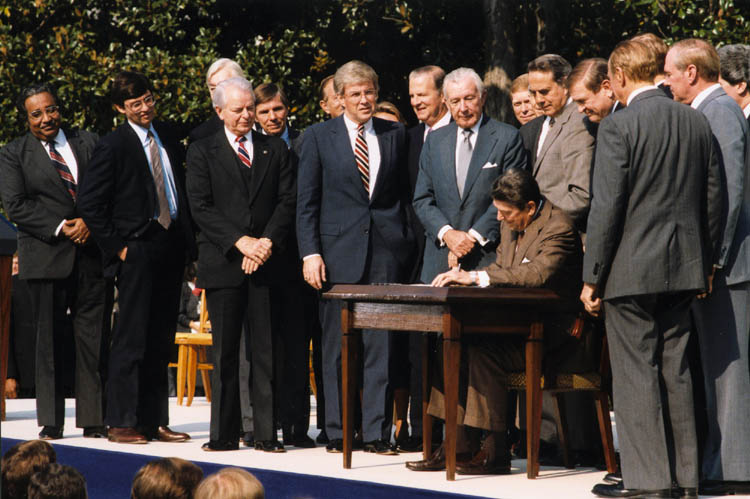 So crazy that even Democrats voted for it…
So crazy that even Democrats voted for it…
Politicians are wont to make sweeping proposals during campaign season, only to renege in a dramatic fashion once in office. In 2008, then-candidate Barack Obama pledged to create a net “spending cut” his first year in office. That certainly didn’t happen. Dozens of Republican congressional, senatorial, and gubernatorial candidates pledged to conduct an immediate and comprehensive review of existing and proposed rules, regulations, and statutes in 2010. Even though many are now in office, we’re still waiting. And let us not forget that the American public did indeed read George H.W. Bush’s lips when he pledged not to instate new taxes, only to make him a one-term president when he did the opposite.
It seems that no matter how far back you chose to look, every election cycle is full of the unrealistic commitments and the euphoric aspirations of candidates who are trying to prod a populace into the polling place. Once elected and forced to confront the realities of office, these same individuals retreat from their promises to pursue a politically more expedient path. With such a track record, what makes us think that the promises of this election cycle will be any different? How feasible is Ron Paul’s pledge to abolish the Federal Reserve? How realistic is it to assume that Herman Cain’s 9-9-9 plan will be implemented? And what is the likelihood of Rick Perry’s economic agenda passing?
Very. At least on the last count.
While the viability of scrapping the current tax code for 9-9-9 or systematically dismantling the Fed seems to rival that of Obama getting reelected, Mr. Perry’s recently announced “Cut, Balance, Grow Plan” may be different for no other reason than it rests on solid historical precedent.
History tells us that radical proposals from both the left and the right never fully pan out; if they aren’t defeated in their entirety, they are adopted in a watered-down form that has some appeal to the political center. While certain elements of Mr. Perry’s plan may not come to fruition for this very reason, the core components of Cut, Balance Grow may just be viable, as demonstrated by Ronald Reagan’s Tax Reform Act of 1986.
In both cases, critics charged that the plans in question were far too revolutionary to pass. Just as the notions of an opt-in flat income tax rate of 20% and sweeping deduction reform seem politically naïve now, Reagan’s proposal to slash taxes in the highest tax bracket by 44% while raising taxes on the lowest income bracket by 27% seemed outlandish then. But it passed. Helped along by items that reduced loopholes and expanded the efficiency of revenue collection, the bill generated bi-partisan support and was signed into law.
For much the same reason, Mr. Perry’s Cut, Balance Grow proposal may just be politically tenable because of the very thing that its critics decry the most: its simplicity. The plan stands in stark contrast to the mystifyingly convoluted taxation system of the Obama White House. In place of high income tax rates and a tax code that is replete with loopholes, exceptions, and deductions, “Cut, Balance and Grow” has the potential to increase realized revenues by simplifying the complex and by facilitating economic growth with Laffer Curve-like efficiency. If Mr. Perry can link these perceived economic benefits with his plan just as Ronald Reagan did, such a straightforward solution may just be a political winner.
— Nick Desatnick

Be the first to comment on "So Crazy That It Just Might Work"